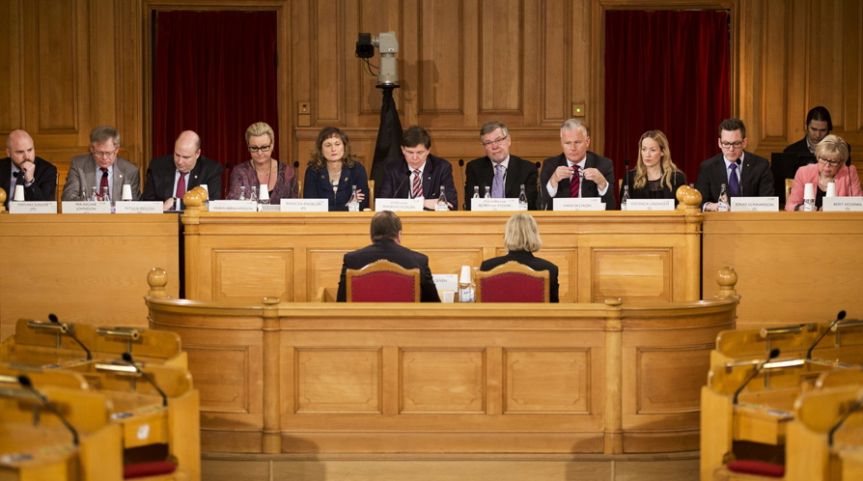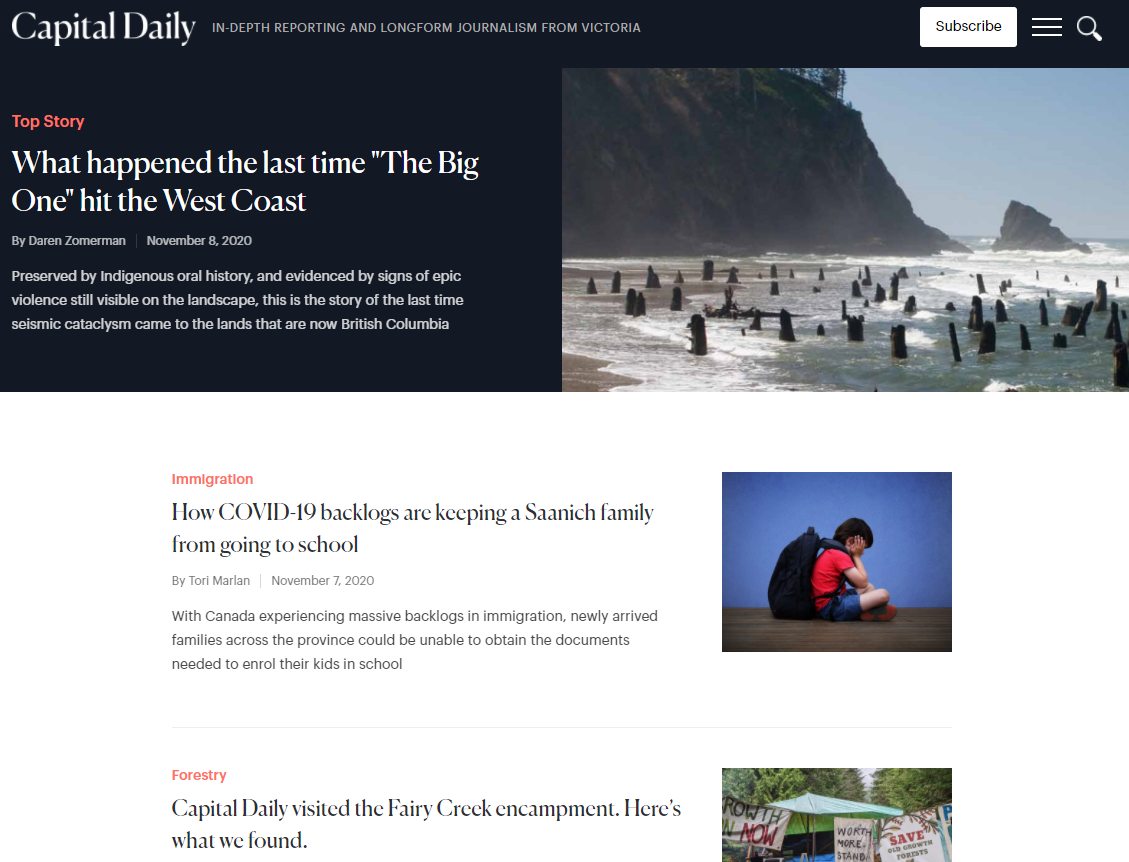
This headline in The Guardian is typical: “Local journalism is on its knees – endangering democracy.”
Looking at me over the table and some thick law books was a handful of serious people telling us the same thing as the Guardian headline. They were CEOs and editors-in-chief of local newspapers.
The place was the beautiful meeting room of the Committee on the Constitution, that I was a member of during my years in the Swedish Parliament.

One story got to me.
Because of the newspaper’s economic conditions, they had to close down local reporting in one area. In the election, turnout was down in that area.
His message was clear: We must save local journalism, otherwise we will hurt democracy.
Local journalism will thrive – local newspapers will die
I agree with that – we need to save local journalism. But that is not the same thing as saving local newspapers.
Local journalism can survive and especially thrive in the internet era. Actually, I’m sure it will.
Recently I’ve seen a great example of this, that I will share with you now.
But first, we must briefly back up and understand why local newspapers are in such economic disarray.
What is killing the newspapers?
In short: The internet.
Local newspapers often created something close to local monopolies. The best way to reach people in that area with ads, especially classified ads, was through those newspapers. They got paid both from subscribers and advertisers and made a lot of money.
The world’s greatest investor, Warren Buffett, wrote this about them:
“The economics of a dominant newspaper are excellent, among the very best in the business world.”
He owned several newspapers, but has now sold them all.
First Google came with a new kind of ad where advertisers could direct their dollars directly towards people actually looking for their products.
Then Facebook ads made it possible to reach target audiences with a high likelihood of being interested in what you were selling.
Of course this is much more effective than just blasting everyone that happens to live in a city.
Zero distribution cost is great for journalism
But the same internet that brought the newspapers down, will save local journalism.
I left out the end of The Guardian headline: “Local journalism is on its knees – endangering democracy. Who will save it?“

The internet means free distribution. If one or ten thousand people read your article doesn’t matter; your cost doesn’t go up. But printing and distributing one or ten thousand newspapers is a huge difference.
Today’s newspapers have huge costs in printing and distribution, but if you start from scratch without those costs a huge opportunity emerges.
At least in theory.
I’ve been saying this for years, but real-world examples have not been that many.
Local journalism – a success story
Until I came over these tweets by Andrew Wilkinson:
Despite being a journalism school dropout, I've always loved the news.
Every morning for the past decade, I've read all the big papers (NYT, WSJ, FT) and been blown away by their investigative reporting.
Then I'd pickup our local newspaper, The Times Colonist, and feel sad…
— Andrew Wilkinson (@awilkinson) October 29, 2019
He continued to describe the broken business model, unexciting news and lack of investigating reporting.
“No context or depth. A race to hit the tweet button then jump to the next story and hit daily quotas and traffic numbers to sell more banner ads.”
But instead of just complaining and thinking nothing can be done about it, he launched Capital Daily.
“Our goal is to become what the hometown paper used to be—the publication of record. Trusted, independent, and non-partisan reporting on business, politics, and crime.”
“So proud of what the team has accomplished so far and can’t wait to see where it goes.”
So, where did it go?
Andrew updated his thread earlier this year:
In 2019, I set out to do something simple:
Recreate the local newspaper in digital form, by creating a simple daily newsletter focused on Victoria, Canada, my home town 📰
I hired a journalist and we started sending out a quick summary of what’s happening every day at 7AM… https://t.co/CVdc2IsARa
— Andrew Wilkinson (@awilkinson) September 1, 2020
We wanted to give people a quick overview of what’s happening (news, events, sports, arts) in 2 min or less. Something you can skim over your morning coffee, like the front page of the newspaper, to feel more informed.
I figured it would be a short lived goofy experiment… After all, local/community news is dead, right? Nope. Not at all…
It turns out people—at least in Victoria—are desperate to know what was happening in their local community.
I’ve been involved with all sorts of flashy companies, but for the first time I got stopped in local cafes and people gushed about Capital Daily, our newsletter…
Before we knew it, we had 5,000 subscribers. Then 20,000. A year later, we have over 40,000 subscribers.
The population of Victoria is only around 367,000, so 1 in 10 residents reads our newsletter(!) We are now bigger than The Times Colonist, the 100 yr old daily paper…
We’ve started hiring full-time journalists to do original reporting and covering topics that other newsrooms (focused on short form quick bites) can’t or won’t cover.
So what made this work so well? A few things:
1. We figured out the pareto principal. 80% of the results for 20% of the effort. We realized that the key thing people wanted was a simple briefing instead of a complex news website. The job to be done was: “something to skim that gives me a rough sense of what’s happening”…
2. We cut out all the legacy costs of a news business. No printing press. No office. Cheap software (Mailchimp/Webflow).
3. Most importantly: we used cheap digital advertising to build up our audience. We spent about $200k on Facebook and Instagram with almost zero competition.
These keywords are untouched. Nobody is spending money on news audience acquisition.
Think about this:
I could have gone and bought the local paper for $5-$15MM.
Instead, I spent $200k on FB ads, $50 on Mailchimp, and $60k on a writer and BOOM!
Now I own the largest daily audience in the city, with no gatekeepers (direct to inbox, no FB or platform risk).
I expected to burn money, but now advertisers are lining up and we’ve realizing it can not only break even, but be profitable…
But what’s cool about this is that, even in 2020, local news is relatively untouched (everyone thinks it can’t be done) and can be profitable…
We are doubling down. I have hired an amazing CEO and we want to roll this out across Canada and maybe the US, but I wanted to share some inspiration for anyone thinking about how to best support local news….
For about $100-200k, you can probably do something similar in your city.

Interview with the CEO
I reached out to Andrew and got connected to the company’s CEO (yet to be announced.)
First I wanted to know how they think about revenue and specifically subscriptions, since advertising might not be the best long-term bet, at least in my opinion.
In “my version” of local journalism I base the revenue mostly on a low subscription fee, like $5-15/month. I think many people would be willing to pay that both for short-form news and investigating reporting. Do you think about something like that, or are you mainly going for ads? Or something else? If not subscription fee, why not?
“We’re on a mission to create a sustainable news organization, so considering every revenue stream in order to get there. In Canada, people have been slow, and reluctant, to pay for digital news so we’re exploring what a combination between advertising and memberships could look like. Ideally we’re primarily funded through readers and have less dependence on advertisers to keep us alive.”
Are you profitable now?
“We’ve been revenue positive for a while now, should be profitable in 2021.”
Andrew hinted in his tweets about expanding to other cities, are you going to do that?
“We see gaps in communities everywhere. Newspapers have been laying off reporters or have shut down completely over the past decade, and covid has only made it worse. There’s a lack of community news, and we’re looking to solve some of that.”
Did you see that? After a year or so they are revenue positive! Maybe even profitable in 2021. Just to remind you, this is local journalism we are talking about. The business that is “on its knees.”
The optimist’s edge
This is a perfect example of the optimist’s edge.
Everyone thinks local journalism is going down the drain and there is nothing to do about it. Instead there is a tremendous opportunity here.
I guess that Andrew’s company will soon cover dozens of cities and has the potential to be a huge media company.
You have the same opportunity.
At the same time you can create a news media that doesn’t have a negative bias and instead give people a balanced view of the world.
Save local journalism, help democracy, make a ton of money and create a fact-based balanced news media.
Do it! 😀
Mathias Sundin





